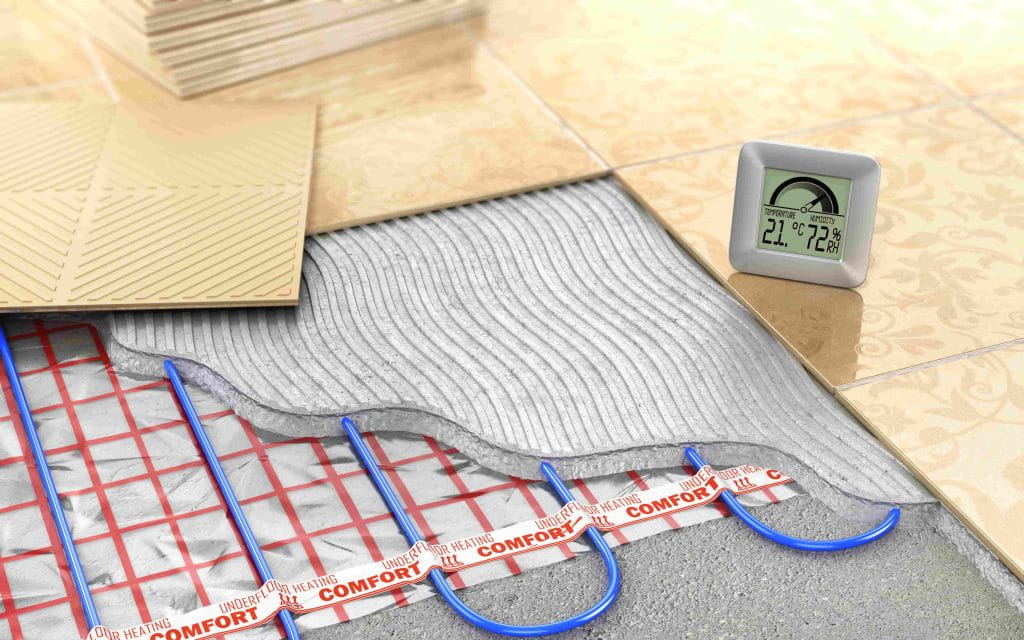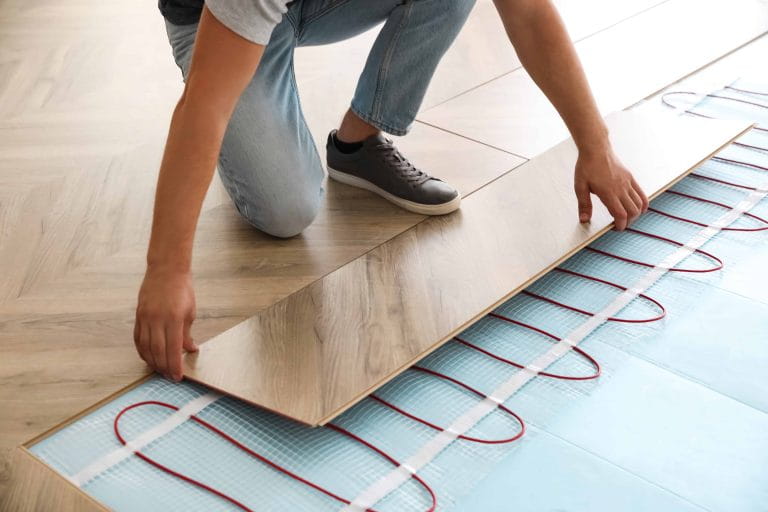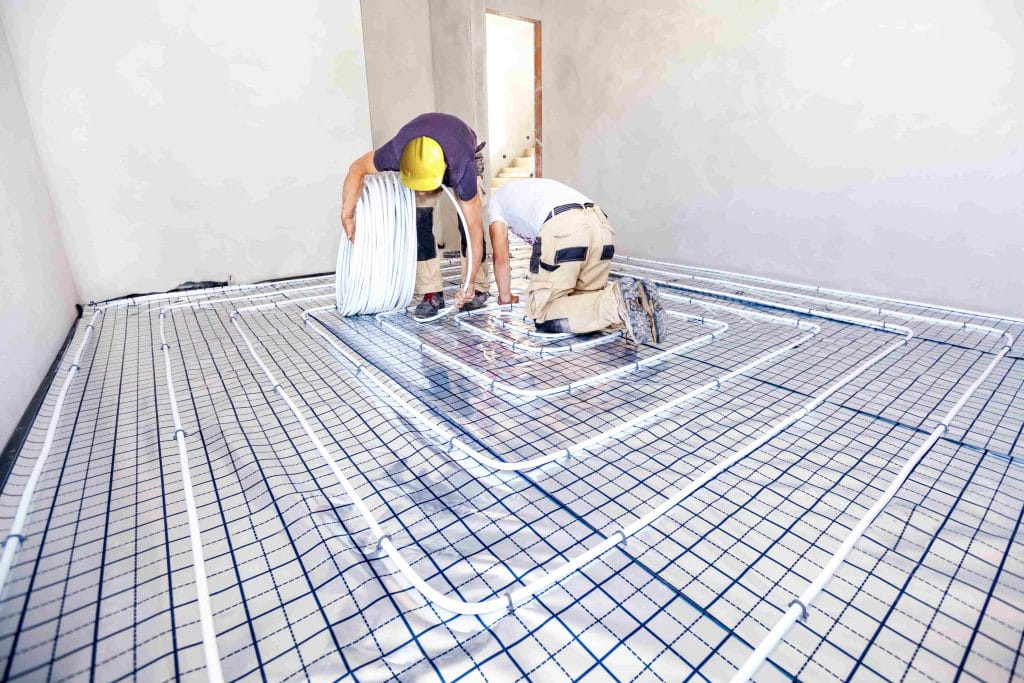Underfloor heating is an alternative heating system to traditional radiators, particularly common in new homes and designed to optimise energy savings. Its use has both pros and cons. Let's explore them together, also comparing it to a radiator system.
Is underfloor heating worth it?
To evaluate whether it is worth installing underfloor heating in your home, a comprehensive overview is necessary, considering the interventions required to achieve the best results.
Already in use between the 1950s and 1970s, it has regained popularity in recent years thanks to technological innovations that have improved its functioning, making it one of the most appreciated systems.
Underfloor heating systems consist of radiant installations that allow heat transmission through the radiation of the surface. They consist of:
- pipes for closed-circuit water heating systems;
- electric resistances for electrical systems.
In both cases, the pipes or electric cables are placed on radiant panels positioned under the floor, making them invisible. For this reason, it offers an excellent aesthetic solution.
- Water-based systems: pipes are traversed by low-temperature hot water. Through radiation, heat is uniformly distributed throughout the environment.
- Electric systems: the mechanism is identical, but electricity acts as the heat carrier.
For water-based underfloor systems, generally more common than electric ones, the elements for its proper functioning include:
- pipes, made of polyethylene or a combination of plastic and metallic materials;
- insulating panels, designed to allow the laying of pipes;
- boilers or thermal solar panels to heat the water;
- collectors and regulation units, essential accessory elements for the system's proper functioning.
The supervision of expert technicians is essential to evaluate the individual steps and their feasibility, considering underfloor heating as the ideal solution to achieve excellent domestic comfort through the uniform distribution of heat. The benefits include several aspects.
- Health Benefits: It avoids the formation of dust and mites, which are very harmful to health. It is ideal for those suffering from asthma and allergies.
- Space savings: Space can be recovered in the rooms of the house, as radiators do not need to be installed.
- Energy efficiency: As previously mentioned, underfloor heating can be combined with a condensing boiler or a heat pump. This further optimises energy consumption, saving even more on utility bills. For example, a condensing boiler uses the condensation generated by exhaust gases to transform it into additional energy.

How much can you save with underfloor heating?
To be efficient and have positive impacts in terms of consumption savings, some specific conditions must be met. This is undoubtedly easier in the case of building a new housing unit or a complete renovation.
Otherwise, the ideal solution to achieve the same thermal benefit as an underfloor system is represented by the installation of next-generation radiators. These are particularly efficient when combined with home automation systems like smart valves that allow precise and accurate remote control of heat delivery without necessarily staying on all day, as is necessary with underfloor heating.
As mentioned, an underfloor heating system allows for savings on consumption, especially if it is implemented from scratch. This allows for considering a second initial investment, such as installing a generator like a heat pump.
The savings can also be dual-purpose since it is a solution for both heating and cooling. This means it can be an alternative to air conditioners during the summer season, reducing electricity expenses. Floor cooling is achieved by circulating cold water through the pipes. However, this operation requires that the system is correctly designed, with the installation of dehumidifiers and air exchangers throughout the home to prevent the formation of condensation on the floor.
What are the disadvantages of underfloor heating?
When considering the adoption of this heating system, it is essential to also take into account the disadvantages, the foremost being the initial cost. While it is true that underfloor heating can lead to savings on energy bills, its initial installation requires a significant financial investment.
In most cases, for instance, the construction of a screed is necessary. The screed is a supporting layer for the floor that must withstand mechanical stress and is essential for:
- achieving a precise level for the flooring;
- supporting the flooring;
- facilitating load distribution;
- covering the radiant system.
Underfloor heating is particularly suitable for new constructions that are in the completion phase. This allows for the creation of a new floor from scratch to facilitate the installation of the radiant system. It is necessary to prepare the base intended to host the pipes or electric resistances and the appropriate radiant panels.
On the other hand, it is also true that it is possible to intervene on an existing floor, provided it is in good condition. Therefore, this is not an option for old floors that are not well preserved.
The old covering needs to be covered with insulating panels to prevent heat dispersion and direct it from the bottom up. Once the system is installed, it must be covered with specific solutions like the screed to create a suitable surface for laying the new floor.
Intervening on existing flooring thus results in raising its level, which can impact other elements present in a room, such as custom-made furniture.
Special attention should also be paid to repair work in case of malfunctions. These require dismantling the flooring, making it crucial to rely on specialised technicians who know where to intervene promptly.
The performance of underfloor heating can be affected by the furniture in the rooms, especially in bathrooms. Elements such as carpets, sofas, and furniture can obstruct the heating of the spaces. Additionally, it requires continuous operation to achieve maximum comfort.
Underfloor heating on or off?
A final aspect to consider when evaluating the option of an underfloor radiant heating system is that it needs to be left on continuously for the environment to warm up adequately. It must remain active even after reaching the desired temperature.
It cannot be turned on and off intermittently, unlike a system that provides heat through radiators.
An important factor is the type of flooring to be installed over the radiant panels. There are two key factors to consider in choosing this element: thermal conductivity and thickness.
- Thermal conductivity: it refers to a material's ability to transmit heat.
- Thickness: if it is low, thermal conductivity is higher, and thus the ability to transmit heat will be better. Choosing the right flooring helps optimise the performance of the entire heating system.
Based on this combination, one can deduce the best type of flooring to use.
- Wood or parquet flooring. This does not have high thermal conductivity, even if its thickness is just a few millimetres. Its main weakness is its delicacy. However, since this technology can also be installed with such flooring, it is better to opt for layered parquet or increase the number of loops in the underfloor heating system to enhance its heating power.
- Granite and marble flooring. These have good thermal conductivity since they are natural stones. However, the slabs are typically 2-3 cm thick, which is too much to ensure uniform heat distribution.
- Porcelain stoneware or ceramic flooring. These are the ideal solutions. Ceramic heats up easily and transmits heat evenly, offering low thermal resistance. Thanks to this feature, heat spreads quickly throughout the environment. Additionally, the final product is very thin, yet retains strength.
- Laminate and PVC flooring. These are also suitable options. Their thinness allows heat to pass through easily and promotes its diffusion.











































